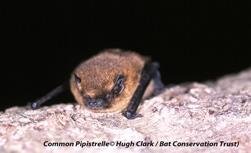Mammals have filled the full range of niches available to them and may be specialist ….or generalist …. Ranging in size from the tiny pygmy shrew to the large red deer, wild mammals include species that walk, run, climb and even fly. Some are enigmatic and feature in our myths and legends. Others we think of as pests when their needs conflict with ours.
From the seed harvest rodents, to the browsers, such as deer, rabbits and hares, to carnivores, some specialist (weasel) and opportunistic (fox), to the highly specialised bats. In total in Wales there are about 45 species of free-ranging terrestrial mammals from 5 different Orders. They occupy most habitat types from the remote uplands to wooded valleys and aquatic environments such as rivers, streams and estuaries and some have adapted to share our dwellings.
Mammals adopt a range of survival strategies. Voles and rabbits are prolific breeders, but bats live for many years and produce at most one young per year. Dormice and bats hibernate when food supplies are low whilst squirrels do not hibernate, but can be less active in winter.
A number of mammals found in Wales are not native and have impacted on other native mammals, such as mink which escaped from fur farms and have had a devastating impact on the water vole, and grey squirrels (released by well-meaning Victorians and responsible for the decline of the red squirrel). Some mammals are extremely numerous (voles are estimated to number 75 million in Great Britain) and are regularly in contact with people within the houses (house mouse), gardens (moles) or in the wider countryside where some are considered to be a pest for one reason or another (e.g. fox). Others are very rare (barbastelle bat, pine marten) and declining (water vole) and hence of great conservation concern or unique to Wales (Skomer vole). Some have become extinct as a result of man’s activities with some people wishing for them to be reintroduced (beaver).
What they all have in common is that they give birth to live young which the mothers suckle with milk until they are able to fend for themselves. They are also a key part of the Welsh biodiversity. And they’re a good indicator of the health of our environment – the return of the otter to most rivers in Wales, for example, is a sign that our water courses are clean and provide plenty of fish and amphibians.
Sites of Special Scientific Interest (SSSI) are designated for important populations of otter, water voles and bat species. Otter are also a primary or qualifying feature of 13 Special Areas of Conservation (SAC)


